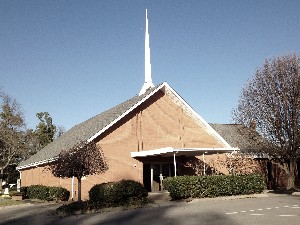By Russell M. Kline
Recently, I was awarded a free sample of National Geographic magazine. It just happened to be the December 2017 issue, and the cover story of that issue just happened to be “The Real Jesus,” with the subtitle, “What Archaeology Reveals About His Life.” That, of course, piqued my interest, and I eagerly read the article to see what archaeological evidence they were examining. The thing about archaeology and the Bible is that the same evidence is available for anyone to review, but the conclusions that are based on the available evidence vary, depending on one’s own view of it.
Archaeologists, like journalists, are never completely impartial. Some are atheists, or agnostics— skeptical of the Biblical account, and looking for evidence that contradicts it. Some are members of a denomination—looking for evidence that seems to support their pet dogmas. Few (if any) are true believers of what the Bible says—looking for confirmation of what is written. Fortunately, for you and me, the evidence is there for us to review also. God has given us the ability to look, and to reason, and to come to our own conclusions (1 The. 5:21).
One of the first sites mentioned in the article is the Church of the Nativity, in Bethlehem, which is the oldest church still in daily use. It was built in the fourth century, by order of Constantine the Great—the first Roman emperor to befriend Christianity. It was built on the site of a grotto, which was believed to the place where Jesus was born. In the third century, Origen of Alexandria recorded that there was a cave in Bethlehem, which was supposed to be the place where Jesus was born. But, it is not known if the grotto of the Church of the Nativity is the same as Origen’s cave. Still, “Absence of evidence isn’t evidence of absence.”
Another site mentioned is the Church of the Holy Sepulcher, in Jerusalem. Several Christian sects lay claim to this centuries-old building. It is interesting, because it is actually a composite of several buildings, which were erected at different times by different sects. Thought to have been built on the very site of Jesus’ crucifixion and nearby burial, it was the site of a pagan temple, until Constantine ordered the construction of a church in its place, in 325. It was destroyed by order of a Muslim Caliph, in 1009. It was rebuilt and expanded by Crusaders, in 1099. It was damaged by earth- quakes, wars, and hostile takeovers through the years, and repaired, each time. Today, efforts are underway to discover what archaeological treasures lie beneath its foundations, and what new information may be gleaned from them. It is interesting to note that excavations have already confirmed that there is, in fact, a Jewish burial site under the church, which lends some credence to the original claims made about it.
Another site mentioned is in the ancient town of Capernaum, a fishing village on the northwest shore of the Sea of Galilee. It was here that Jesus called Peter, Andrew, James, and John to follow Him, as they were mending their fishing nets (Mat. 4:18-22). It was here that Peter had a house, where Jesus healed his mother-in-law (Luke 4:38,39). This place served as a kind of base of operations for Jesus, as He ministered throughout Galilee and beyond. There is a place there called Saint Peter’s Memorial, from which people can get a glimpse into the archaeological dig of the ruins of an octagonal church building, which was built about 1,500 years ago. In 1968, it was discovered that the church had been built on the remain of a house, which dates to the first century. Evidence suggests that the house was transformed from a private residence to a public meeting place in the second half of the first century. Was this Peter’s house, in Capernaum? There is not enough evidence to answer that question, but the possibility cannot be ruled out.
Then, there is also the mention of an artifact that was discovered in a shallow part of the Sea Galilee, during an exceptionally dry year—the remains of a first century fishing boat. Today, it is housed in a museum, at a nearby kibbutz. It is seven and half feet wide and 27 feet long. It could have accommodated as many as 13 men—although there is no evidence that Jesus and His twelve apostles ever used this particular boat. It is evident that the boat was well used— having been patched and re-patched, until it could no longer hold together. It is the only find of its kind that is available to the public. While it may not be much to look at, it is a tangible connection with the Galilean fishermen of the first century, at least four of whom became full-time followers of Jesus Christ. It is like the boats that bore the Lord and His disciples across the Sea of Galilee on a number of occasions. It is like the boat from which Jesus preached to the people of Capernaum, in Luke 5. It is like the boat from which Peter went fishing on the Sea of Galilee one last time, in John 21. It helps bring to life the accounts that we read in the New Testament.
If you are looking for the “real” Jesus, you need not look any further than the pages of your New Testament. Nothing in archaeology has ever proved contradictory to the Biblical record. We can read the Bible and have absolute faith in what we are reading. Archaeology is on the side of the Scriptures. “And many other signs truly did Jesus in the presence of his disciples, which are not written in this book, but these are written, that ye might believe…” (John 20:30, 31).


